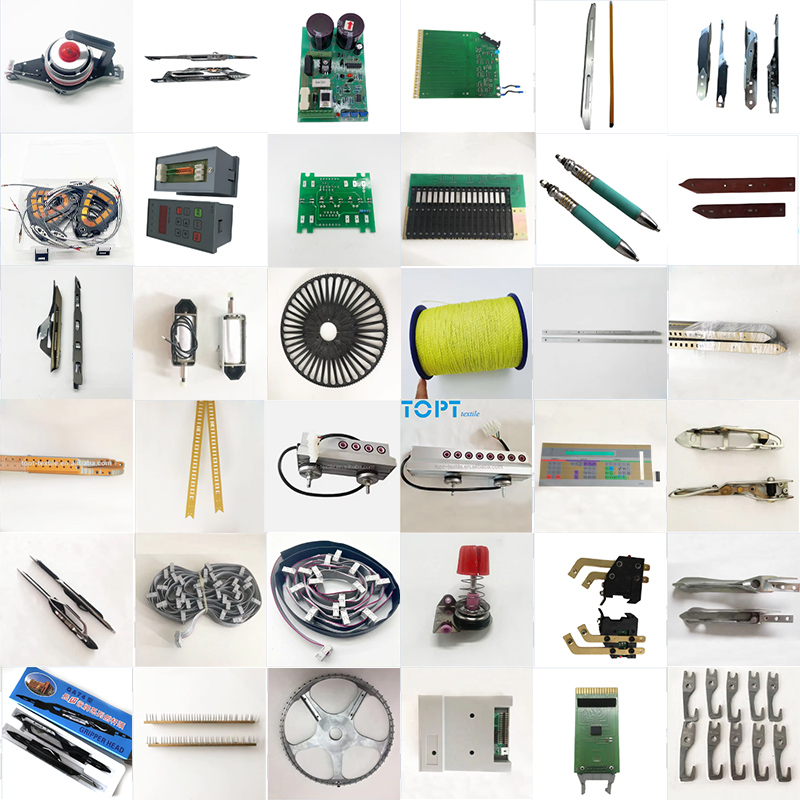In the world of high-speed weaving, precision and durability are crucial for maintaining smooth operations. Weaving loom machines are designed to run at high speeds, often under intense pressure and heat. As a result, one of the most critical components that ensures the machine’s efficiency and longevity is the brake rotor. In this article, we will explore the importance of heat-resistant brake rotors, why they are vital for weaving loom machine spare parts, and how they contribute to the overall performance of high-speed weaving machinery.
The Role of Brake Rotors in Weaving Loom Machines
Brake rotors are essential components of the braking system in any machinery, including weaving loom machines. These rotors help regulate the speed of the machine by applying friction to slow down or stop the rotating parts. This is particularly important in high-speed weaving operations where the loom’s mechanism must respond quickly to adjustments in speed or position.
Weaving looms often operate at high speeds and under heavy mechanical stress. This puts immense pressure on the brake system, especially the brake rotors. If the rotors are not designed to withstand the heat generated during these operations, they can fail, leading to performance issues or, in some cases, costly downtime. This is why heat-resistant brake rotors are crucial for the continued success of weaving operations.
Why Heat-Resistant Brake Rotors are Vital for Weaving Loom Machines
Heat resistance is one of the most critical properties of brake rotors in high-speed weaving machines. When a weaving loom operates at full speed, the brake system generates significant heat. If the brake rotor cannot handle this heat, it will warp, crack, or even fail completely. This can result in reduced braking performance, malfunctioning of the loom, and increased maintenance costs.
Heat-resistant brake rotors are specifically designed to withstand the high temperatures produced during high-speed weaving machine operations. These rotors are typically made from materials that have high thermal conductivity and excellent heat resistance properties. By dissipating heat more efficiently, they maintain their shape and functionality, even under extreme conditions, ensuring that the weaving loom operates smoothly without unexpected interruptions.
The Materials Behind Heat-Resistant Brake Rotors
The effectiveness of a heat-resistant brake rotor lies in its material composition. Typically, these rotors are made from advanced alloys or composites that can withstand high temperatures without losing their structural integrity. Materials such as carbon composites, ceramic, and specially formulated steel are commonly used for manufacturing brake rotors in high-speed industrial machinery.
Ceramic brake rotors, for instance, are known for their exceptional heat resistance and ability to maintain performance even at temperatures over 1,000 degrees Fahrenheit. This makes them ideal for use in weaving loom machines, which are subject to rapid acceleration and deceleration cycles, generating significant heat in the process.
The material’s ability to dissipate heat is also crucial. If a rotor retains too much heat, it can become less effective at providing friction, leading to brake failure. Heat-resistant materials help prevent this by quickly transferring heat away from the rotor’s surface, allowing it to maintain consistent performance and durability.
Benefits of Heat-Resistant Brake Rotors for Weaving Loom Machines
• Increased Durability: One of the primary benefits of heat-resistant brake rotors is their durability. These rotors are designed to last longer than standard brake rotors because they are less likely to degrade under high heat conditions. This reduces the frequency of rotor replacements, saving time and money for machine operators.
• Enhanced Performance: The ability of heat-resistant brake rotors to maintain their performance at high temperatures ensures that weaving looms continue to operate at optimal speeds without compromising on safety or quality. This helps improve the overall efficiency of weaving operations, ensuring that the loom can run continuously without performance interruptions.
• Reduced Maintenance Costs: By using heat-resistant brake rotors, weaving loom operators can reduce the frequency of repairs and maintenance required for the brake system. This helps lower the overall cost of upkeep for the machine, allowing operators to focus on production rather than downtime.
• Improved Safety: Brake rotors that can handle higher temperatures contribute to the overall safety of the weaving loom machine. A well-maintained brake system is essential for preventing accidents caused by unexpected braking failures, ensuring that operators and machinery remain safe during high-speed operations.
Conclusion
Heat-resistant brake rotors are an indispensable part of high-speed weaving machines. They ensure that the braking system can handle the heat generated during operations, maintaining optimal performance, durability, and safety. By using high-quality, heat-resistant materials, weaving loom operators can extend the life of their machines, reduce maintenance costs, and ensure smooth and efficient weaving processes.
Incorporating heat-resistant brake rotors into your weaving loom machine’s spare parts is an investment that pays off in the form of increased efficiency, reduced downtime, and long-term reliability. If you’re looking to maintain the quality and productivity of your weaving operations, ensuring that your brake rotors are designed to withstand high temperatures is a critical step toward achieving sustained success.
For more insights and expert advice, visit our website at https://www.topt-textilepart.com/ to learn more about our products and solutions.
Post time: Apr-08-2025

